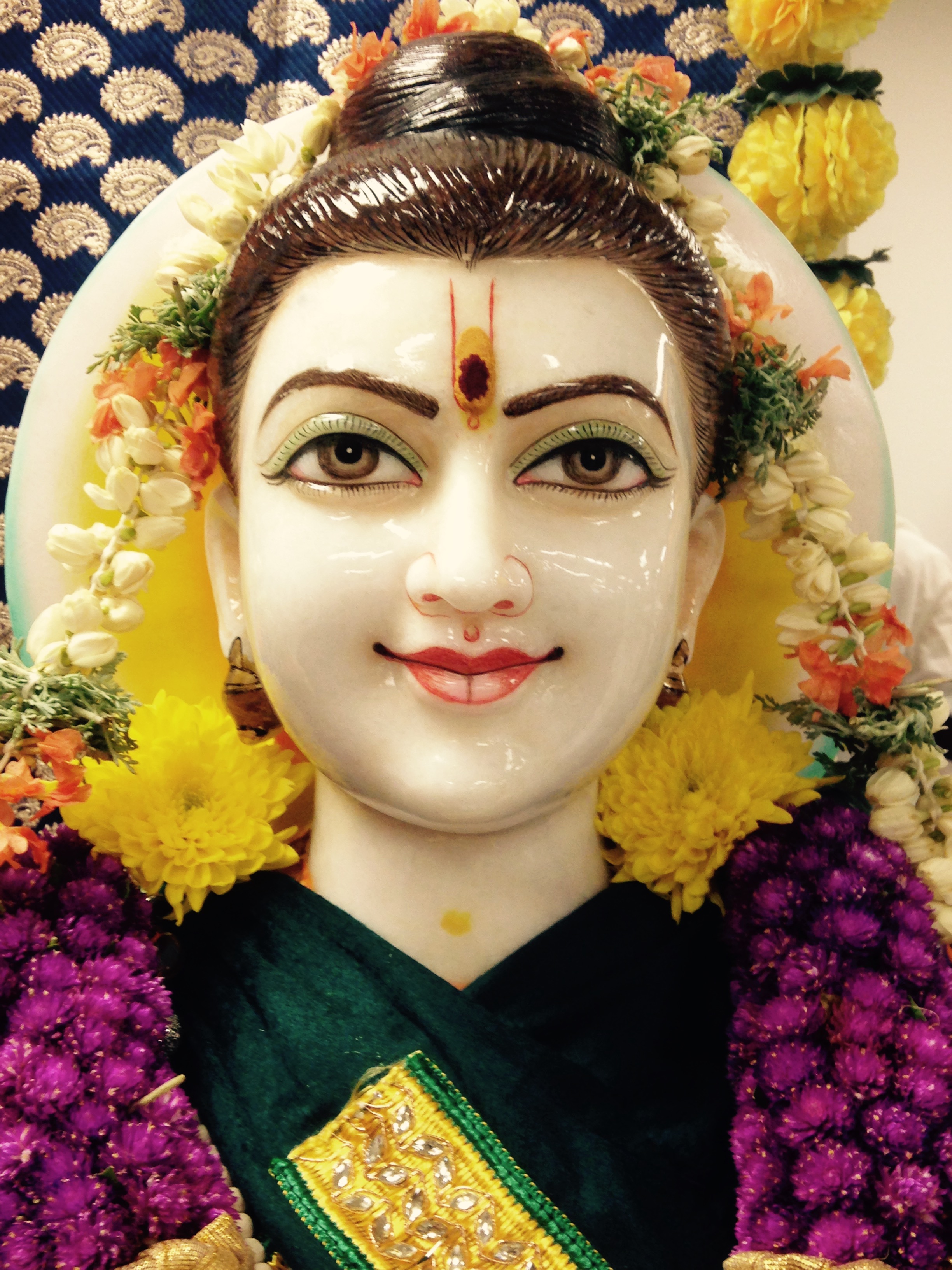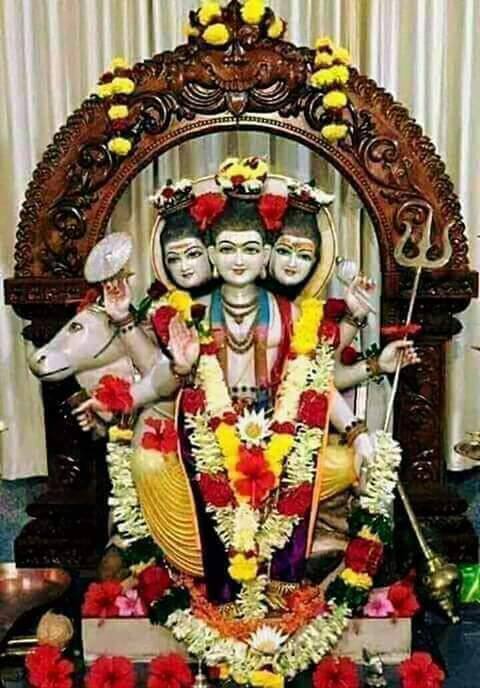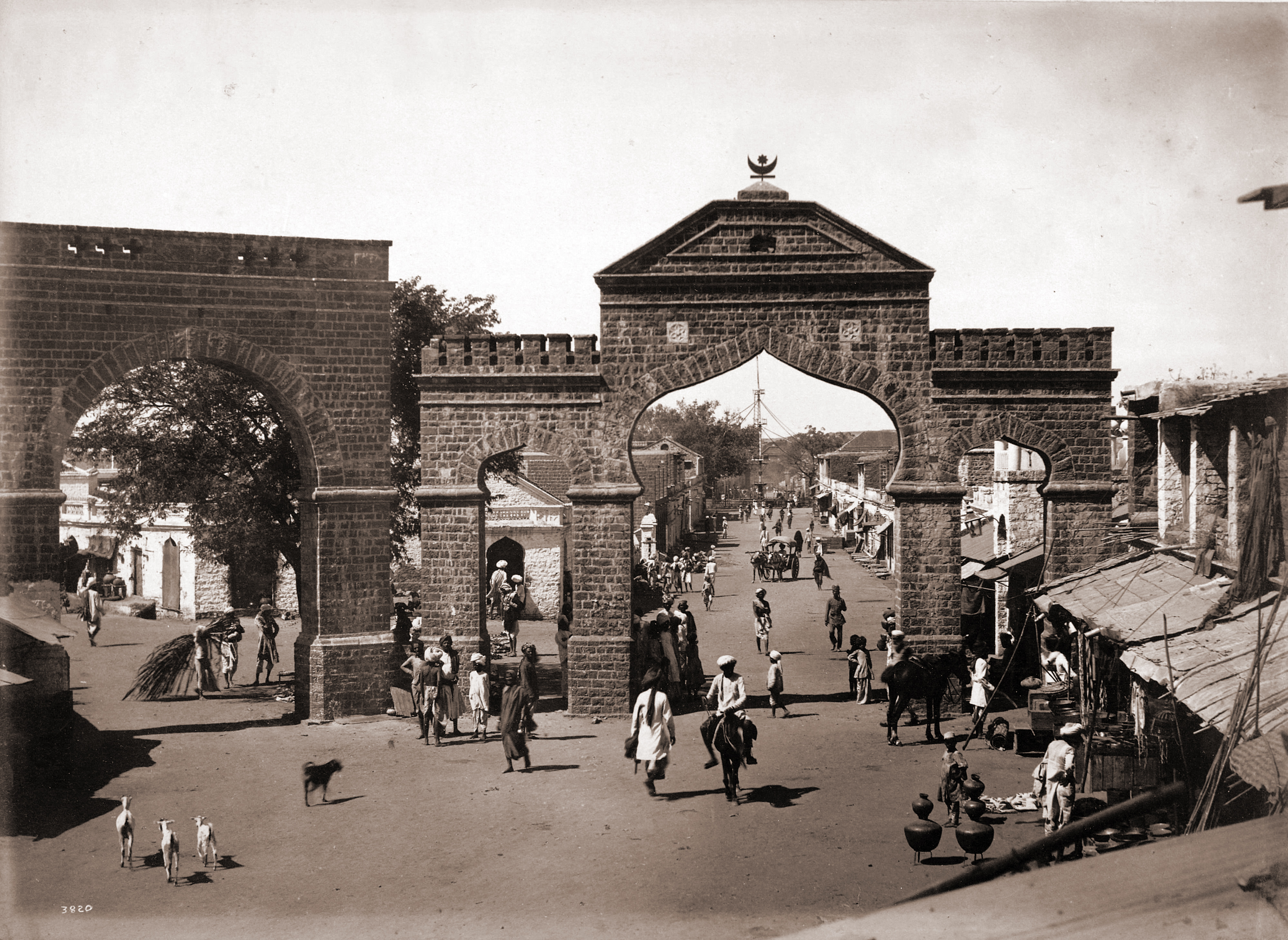|
Ganagapura
Ganagapura (Deval Ganagapur) is a Village in Karnataka, India.Village code= 278500 D.Ghangapur, Gulbarga, Karnataka It is located in the Afzalpur taluk of Kalaburagi district in Karnataka.The Village is noted for its Temple to Lord Dattatreya, who is said to have attained realization on the banks of the confluence (Sangama) of rivers Bhima- Amarja. Demographics In India's 2001 census, Ganagapura had a population of 6491, with 3250 males and 3241 females. Religious significance Ganagapura is a ''kshetra'' (place of pilgrimage) associated with Sri Narasimha Saraswati Swami, the second incarnation of Dattatreya. According to the book ''Shri GuruCharitra'', he promised that he would abide forever at Ganagapura. In the morning, he would bathe at the confluence of the Bhima and Amarja rivers. At midday, he would go through the village asking for ''bhiksha'' (alms of food), and accept '' pooja'' offerings in the form of '' Nirguna Paduka'' at the temple. Devotees believe th ... [...More Info...] [...Related Items...] OR: [Wikipedia] [Google] [Baidu] |
Amarja
The Amarja is a river that flows in Kalaburagi District, Karnataka, India. It is born at Koralli and flows up to 50–60 kilometres and will merge into the Bhima River at Sangama Kshetra Ganagapura village in Gulbarga District. Sangam Kshetra is a meeting (Sangama Mekedatu is a location along Kaveri in the border of Chamarajanagar and Ramanagara Districts. From this point, about 3.5 kilometers downstream, the river Kaveri flows through a deep and narrow gorge. Mekedatu' means 'goat's leap' in Kannada. ...) point of the Bhima and Amarja rivers. The water of these rivers, especially at their confluence, called Sangam, are considered extremely holy. Those who bathe in Sangam will be freed from their sins, and their wishes will be fulfilled. There is a temple in Sangam in which Shree Narasimha Saraswati Swamy (The second incarnation of Lord Dattatreya) regularly bathed. References Rivers of Karnataka Geography of Kalaburagi district Rivers of India {{India-r ... [...More Info...] [...Related Items...] OR: [Wikipedia] [Google] [Baidu] |
Narasimha Saraswati
Shree Narasimha Saraswati Swami Or Shree Nrusimha Saraswati Swami (1378−1459) was an Indian guru of Dattatreya tradition(sampradaya). According to the Shri GuruCharitra, he is the second avatar of Dattatreya in ''Kali Yuga'' after Sripada Sri Vallabha. Life Shri Narasimha Saraswati lived from 1378 to 1459 (Shaka 1300 to Shaka 1380). Saraswati was born into a Deshastha Brahmin family in Karanjapura, modern-day Lad-Karanja (Karanja) in the Washim district, which is a part of Vidarbha region of Maharashtra, India. His father (Madhava) and his mother (Amba-Bhavani) initially named him Narahari or Shaligramadeva, with the surname Kale. Shri Narasimha Sarswati is considered to be the second incarnation of Dattatreya, the first Incarnation was Sripada Srivallabha, as per his blessings to Amba Bhavani, in her previous birth, Sripada Srivallabh had blessed her & he advised her to perform shiva pooja. Later he also told that he would be born to her in her next life as Narasimha S ... [...More Info...] [...Related Items...] OR: [Wikipedia] [Google] [Baidu] |
Dattatreya
Dattatreya ( sa, दत्तात्रेय, ), Dattā or Dattaguru, is a paradigmatic Sannyasi (monk) and one of the lords of yoga, venerated as a Hindu god. In Maharashtra, Goa, Andhra Pradesh, Telangana, Karnataka, Gujarat, and Madhya Pradesh he is a syncretic deity, In Bengal he is known as 'Trinath', avatar of the three Hindu gods Brahma, Vishnu, and Shiva, who are also collectively known as the Trimurti. In other regions, and some versions of texts such as Garuda Purana, Brahma Purana and Sattvata Samhita, he is an avatar of Vishnu only. Several Upanishads are dedicated to him, as are texts of the Vedanta-Yoga tradition in Hinduism. One of the most important texts of Hinduism, namely Avadhuta Gita (literally, "song of the free soul") is attributed to Dattatreya. Over time, Dattatreya has inspired many monastic movements in Shaivism, Vaishnavism, and Shaktism, particularly in the Deccan region of India, south India, Gujarat, Madhya Pradesh, Rajasthan and Himalayan regi ... [...More Info...] [...Related Items...] OR: [Wikipedia] [Google] [Baidu] |
Karnataka
Karnataka (; ISO: , , also known as Karunāḍu) is a state in the southwestern region of India. It was formed on 1 November 1956, with the passage of the States Reorganisation Act. Originally known as Mysore State , it was renamed ''Karnataka'' in 1973. The state corresponds to the Carnatic region. Its capital and largest city is Bengaluru. Karnataka is bordered by the Lakshadweep Sea to the west, Goa to the northwest, Maharashtra to the north, Telangana to the northeast, Andhra Pradesh to the east, Tamil Nadu to the southeast, and Kerala to the southwest. It is the only southern state to have land borders with all of the other four southern Indian sister states. The state covers an area of , or 5.83 percent of the total geographical area of India. It is the sixth-largest Indian state by area. With 61,130,704 inhabitants at the 2011 census, Karnataka is the eighth-largest state by population, comprising 31 districts. Kannada, one of the classical languages of India, ... [...More Info...] [...Related Items...] OR: [Wikipedia] [Google] [Baidu] |
Bhima
In Hindu epic Mahabharata, Bhima ( sa, भीम, ) is the second among the five Pandavas. The ''Mahabharata'' relates many events that portray the might of Bhima. Bhima was born when Vayu, the wind god, granted a son to Kunti and Pandu. After the death of Pandu and Madri, Kunti with her sons stayed in Hastinapura. From his childhood, Bhima had a rivalry with his cousins Kauravas, especially Duryodhana. Duryodhana and his uncle, Shakuni, tried to kill Bhima multiple times. One was by poisoning and throwing Bhima into a river. Bhima was rescued by Nāgas and was given a drink which made him very strong and immune to all venom. After the event of Lakshagriha, the Pandavas and their mother decided to hide from Hastinapura. During this period Bhima slew many Rakshasa including Bakasura and Hidimba. Bhima had three wives Hidimbi, the Rakshasi sister of Hidimba, Draupadi, who was married to five Pandavas because of Kunti's misunderstanding, and Valandhara, a princess of Kash ... [...More Info...] [...Related Items...] OR: [Wikipedia] [Google] [Baidu] |
Kalaburgi
Kalaburagi, formerly known as Gulbarga, is a city in the Indian state of Karnataka. It is the administrative headquarters of the Kalaburagi district and is the largest city in the region of North Karnataka (Kalyana-Karnataka). Kalaburagi is 623 km north of the state capital city of Bangalore. It was incorporated into the newly formed Mysore State (now known as Karnataka) through the States Reorganisation Act in 1956. Kalaburagi city is governed by a Municipal Corporation and is in the Kalaburagi Urban Region. It is called a Sufi city. It has famous religious structures, like the Khwaja Banda Nawaz Dargah, the Sharana Basaveshwara Temple and the Buddha Vihar. It also has a fort built during the Bahmani rule. Other Bahmani monuments include the Haft Gumbaz (seven domes together) and the Shor Gumbad. Kalaburagi has the world's largest cannon. Kalaburagi has a few architectural marvels built during the Bahamani Kingdom rule, including the Jama Masjid in the Kalaburagi Fort. ... [...More Info...] [...Related Items...] OR: [Wikipedia] [Google] [Baidu] |
Mumbai
Mumbai (, ; also known as Bombay — the official name until 1995) is the capital city of the Indian state of Maharashtra and the ''de facto'' financial centre of India. According to the United Nations, as of 2018, Mumbai is the second-most populous city in India after Delhi and the eighth-most populous city in the world with a population of roughly 20 million (2 crore). As per the Indian government population census of 2011, Mumbai was the most populous city in India with an estimated city proper population of 12.5 million (1.25 crore) living under the Brihanmumbai Municipal Corporation. Mumbai is the centre of the Mumbai Metropolitan Region, the sixth most populous metropolitan area in the world with a population of over 23 million (2.3 crore). Mumbai lies on the Konkan coast on the west coast of India and has a deep natural harbour. In 2008, Mumbai was named an alpha world city. It has the highest number of millionaires and billionaires among all cities i ... [...More Info...] [...Related Items...] OR: [Wikipedia] [Google] [Baidu] |
Darśana
Hindu philosophy encompasses the philosophies, world views and teachings of Hinduism that emerged in Ancient India which include six systems ('' shad-darśana'') – Samkhya, Yoga, Nyaya, Vaisheshika, Mimamsa and Vedanta.Andrew Nicholson (2013), Unifying Hinduism: Philosophy and Identity in Indian Intellectual History, Columbia University Press, , pages 2–5 In Indian tradition, the word used for philosophy is Darshana (Viewpoint or perspective), from the Sanskrit root ('to see, to experience'). These are also called the Astika (theistic) philosophical traditions and are those that accept the Vedas as an authoritative, important source of knowledge. Ancient and medieval India was also the source of philosophies that share philosophical concepts but rejected the Vedas, and these have been called (heterodox or non-orthodox) Indian philosophies. Nāstika Indian philosophies include Buddhism, Jainism, Chārvāka, Ājīvika, and others.P Bilimoria (2000), Indian Philosophy (E ... [...More Info...] [...Related Items...] OR: [Wikipedia] [Google] [Baidu] |
Shri Guru Charitra
The Shri Guru Charitra is a book based on the life of Shri Narasimha Saraswati, written by the 15th-16th century poet Shri Saraswati Gangadhar. The book is based on the life of Shri Narasimha Saraswati, his philosophy and related stories. The language used is the 14-15th century Marathi. The book is written as a conversation between Siddha (who is a disciple of Shri Narasimha Saraswati) and ''Namadharaka'' who is listening to ''Siddha''. It is divided into 3 parts: ''Dhyankand'' (Knowledge), ''Karmakand'' (Work) and ''Bhaktikand'' (Devotion). It has 52 Chapters in which, the 53rd chapter is also called as ''′Gurucharitra Avatarnika′'' which is the summary of the book. The book is assumed to be written in a village in Karnataka known as Kadaganchi. The writer was Saraswati Gangadhar who was a poet and an extreme vanshaj of Sayandev Sakhre, one of the disciples from four favorite disciples of Shriguru Narasimha Saraswati. The chronology introduced in the Shri Guru Charitra ... [...More Info...] [...Related Items...] OR: [Wikipedia] [Google] [Baidu] |
Nirguna Paduka
''Para Brahman'' ( sa, परब्रह्म, translit=parabrahma, translit-std=IAST) in Hindu philosophy is the "Supreme Brahman" that which is beyond all descriptions and conceptualisations. It is described as the formless (in the sense that it is devoid of Maya) that eternally pervades everything, everywhere in the universe and whatever is beyond. Param Brahma is conceptualised in diverse ways. In the Advaita Vedanta tradition, the Param Brahma is a synonym of ''nirguna brahman'', i.e., the attribute-less Absolute. Conversely, in Dvaita Vedanta and Vishistadvaita Vedanta traditions, the Param Brahma is defined as '' saguna brahman'', i.e., the Absolute with attributes. In Vaishnavism, Shaivism and Shaktism, Vishnu, Shiva and Adi Shakti respectively are Param Brahma. Mahaganapati is considered as Param Brahma by the Ganapatya sect. Kartikeya is considered as Param Brahma by the Kartikeya sect. Etymology ''Para'' is a Sanskrit word that means "higher" in some contexts, and ... [...More Info...] [...Related Items...] OR: [Wikipedia] [Google] [Baidu] |
Puja (Hinduism)
''Puja'' ( sa, पूजा, pūjā, translit-std=IAST) is a worship ritual performed by Hindus, Buddhists and Jains to offer devotional homage and prayer to one or more deities, to host and honor a guest, or to spiritually celebrate an event. It may honor or celebrate the presence of special guests, or their memories after they die. The word ''pūjā'' is Sanskrit, and means reverence, honor, homage, adoration, and worship.पूजा ''Sanskrit Dictionary'', Germany (2009) Puja, the loving offering of light, flowers, and water or food to the divine, is the essential ritual of Hinduism. For the worshipper, the divine is visible in the image, and the divinity sees the worshipper. The interaction between human and deity, between |
Bhiksha
Bhiksha ( sa, भिक्षा, ''bhikṣā''; pi, 𑀪𑀺𑀓𑁆𑀔𑀸, ''bhikkhā'') is a term used in Indic religions, such as Jainism, Buddhism and Hinduism, to refer to the act of alms or asking. Commonly, it is also used to refer to food obtained by asking for alms. Buddhism In Buddhism, bhiksha takes on the form of the monastic almsround ( pi, 𑀧𑀺𑀡𑁆𑀟𑀘𑀸𑀭, ''piṇḍacāra''), during which monks make themselves available to the laity to receive almsfood ( pi, 𑀧𑀺𑀡𑁆𑀟𑀧𑀸𑀢, ''piṇḍapāta''). Hinduism Bhiksha signifies a Hindu tradition of asking for alms with the purpose of self-effacement or ego-conquering. Other forms of giving and asking include dakshina (offering a gift to the guru) and dāna (an unreciprocated gift to someone in need). Usually, bhiksha is the meal served to a ''sadhu'' sanyasi or monk when that person visits a devout Hindu household. Occasionally, bhiksha has also referred to donations of gold, catt ... [...More Info...] [...Related Items...] OR: [Wikipedia] [Google] [Baidu] |






